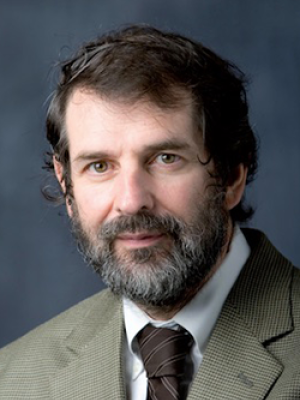New Professorship Honors Namesake’s Creativity and Passion
Name almost any field or profession, and there is probably a Samulski sibling pushing the envelope of what is possible.
Developing gene therapy to treat rare incurable disease? Yes. The discovery of a biaxial liquid crystal considered the holy grail of liquid crystal science? Check. In this sense, Thaddeus Samulski, PhD, was a typical Samulski.
By every account, he was an incredibly talented — and humble — scientist who had an innate affinity for physics. According to his widow, Ricka Samulski, physics was firmly embedded in his DNA. It was during his postdoctoral fellowship in medical physics at Allegheny General Hospital in Pittsburgh, Pennsylvania, that he first started working on hyperthermia — a form of cancer treatment in which heat is applied to tumors to kill cancer cells.
By the time he was recruited to Duke University in 1986, Thad Samulski not only held several patents, but he would also go on to develop the methods and technology capable of measuring temperature noninvasively with magnetic resonance imaging in real time in patients undergoing hyperthermia treatments — a technique his team successfully demonstrated after he retired. This was a critical advance in cancer treatment in several important ways. Previously, needles had to be inserted into tumors to measure temperature, making the experience that much harder and more intrusive for patients, and also providing doctors with imprecise temperature information. Magnetic resonance temperature mapping was less arduous for patients and provided increased accuracy and measurement of heat across tumors.
Thad’s innovative approach improved the efficacy of treatment and patient experience, and his pioneering work was the first to show that non-invasive thermometry was a viable treatment method for patients with soft tissue sarcomas. The methods he pioneered are also used for thermal ablation, particularly for focused ultrasound ablation of diseases such as uterine fibroids. The implementation of non-invasive thermometry during hyperthermia treatment remains a challenge where there is organ motion, as with pancreatic or rectal cancer. Significant advances are being made that may overcome this hurdle but are still in the investigative stage.
Chris Willett, MD, chair of the Department of Radiation Oncology, notes that Samulski was an incredibly innovative medical physicist who advanced the field. “He was both patient-centric and dedicated to advancing research to develop better tools and treatments,” Willett said.
Samulski was also a dedicated and gifted mentor, establishing the first medical physics training program in the Department of Radiation Oncology.
In recognition of Samulski’s life work, a generous gift to Duke from the R.J. Samulski Innovation Foundation has established the Thaddeus V. Samulski Associate/Assistant Professorship to support a medical physicist in his former department.
“This professorship will aid an early career medical physicist at a critical point in their career to advance their science and innovation, and, importantly, to impact the care of cancer patients,” Willett said. “By establishing this professorship in Thad’s honor, the family is contributing to his legacy and the field.”
Kyle Lafata, PhD, has been named the inaugural recipient of the professorship, effective April 1, 2023. Lafata earned his PhD in medical physics from Duke in 2018 and joined the Department of Radiation Oncology in 2020. The overarching goal of his lab is to develop and apply new technology to transform imaging into computational biomarkers.





